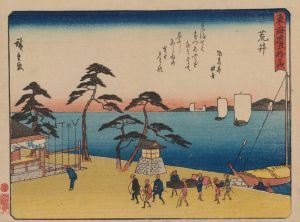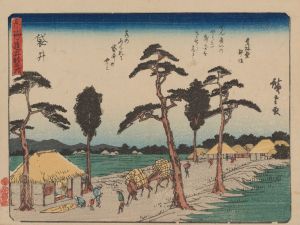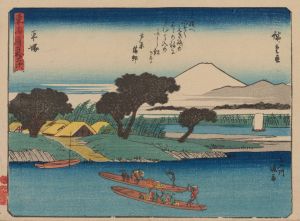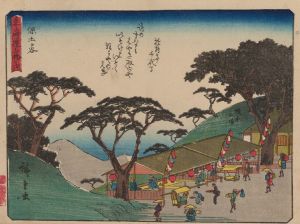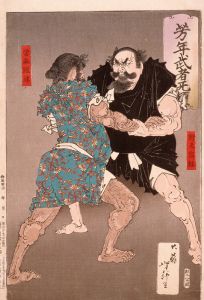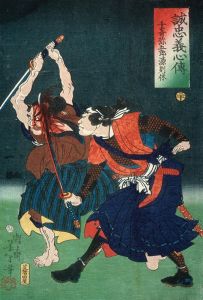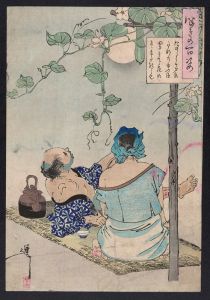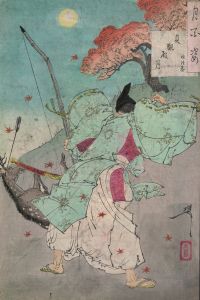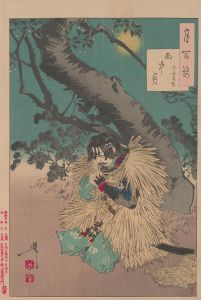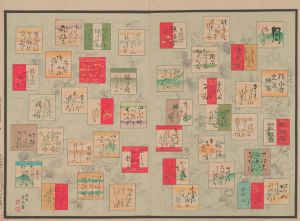
Seventy-sixth Generation, Emperor Sutoku
A hand-painted replica of Tsukioka Yoshitoshi’s masterpiece Seventy-sixth Generation, Emperor Sutoku, meticulously crafted by professional artists to capture the true essence of the original. Each piece is created with museum-quality canvas and rare mineral pigments, carefully painted by experienced artists with delicate brushstrokes and rich, layered colors to perfectly recreate the texture of the original artwork. Unlike machine-printed reproductions, this hand-painted version brings the painting to life, infused with the artist’s emotions and skill in every stroke. Whether for personal collection or home decoration, it instantly elevates the artistic atmosphere of any space.
"Seventy-sixth Generation, Emperor Sutoku" is a woodblock print by the renowned Japanese artist Tsukioka Yoshitoshi. This artwork is part of Yoshitoshi's celebrated series "One Hundred Aspects of the Moon" (Tsuki hyakushi), which was published between 1885 and 1892. The series is known for its exploration of various themes related to the moon, drawing from history, folklore, and literature.
Emperor Sutoku, the subject of this particular print, was the 75th emperor of Japan, reigning from 1123 to 1142. His posthumous reputation is marked by intrigue and tragedy, as he became a central figure in the Hōgen Rebellion, a conflict that arose from disputes over imperial succession. After his abdication, Sutoku was exiled to Sanuki Province, where he spent the remainder of his life. Over time, legends grew around his figure, portraying him as a vengeful spirit, or onryō, believed to have caused calamities after his death.
Yoshitoshi's depiction of Emperor Sutoku captures the complex legacy of this historical figure. The print likely reflects the themes of exile and the supernatural, common in stories about Sutoku. Yoshitoshi was known for his ability to convey emotion and narrative through his art, often using dramatic contrasts and intricate details to bring his subjects to life. His work is characterized by a deep engagement with the cultural and historical context of his subjects, making his prints not only visually striking but also rich in storytelling.
The "One Hundred Aspects of the Moon" series is a testament to Yoshitoshi's mastery of the ukiyo-e genre, a style of woodblock printing that flourished in Japan from the 17th to the 19th centuries. Ukiyo-e, which translates to "pictures of the floating world," often depicted scenes from history, folklore, kabuki theater, and the lives of common people. Yoshitoshi's work, however, stood out for its psychological depth and innovative use of color and composition.
In "Seventy-sixth Generation, Emperor Sutoku," Yoshitoshi may have employed these techniques to evoke the haunting presence of the emperor, capturing the essence of his story and its impact on Japanese culture. The print is a reflection of Yoshitoshi's interest in the supernatural and the historical, blending these elements to create a piece that resonates with the viewer on multiple levels.
Yoshitoshi's legacy as an artist is significant, as he is often credited with revitalizing the ukiyo-e tradition during a time when it was in decline due to the advent of photography and Western art influences. His work remains influential, celebrated for its artistic innovation and its ability to convey the complexities of human emotion and historical narrative.
Overall, "Seventy-sixth Generation, Emperor Sutoku" is a compelling example of Yoshitoshi's artistry, offering insight into the life and legend of Emperor Sutoku while showcasing the enduring appeal of the ukiyo-e tradition.





